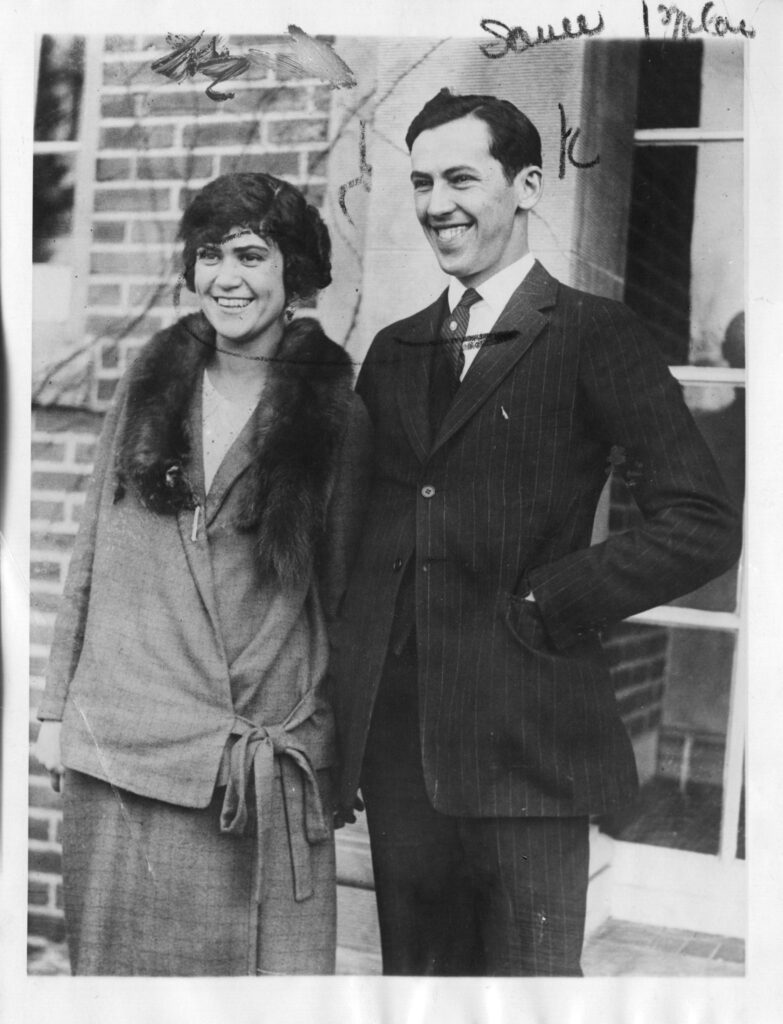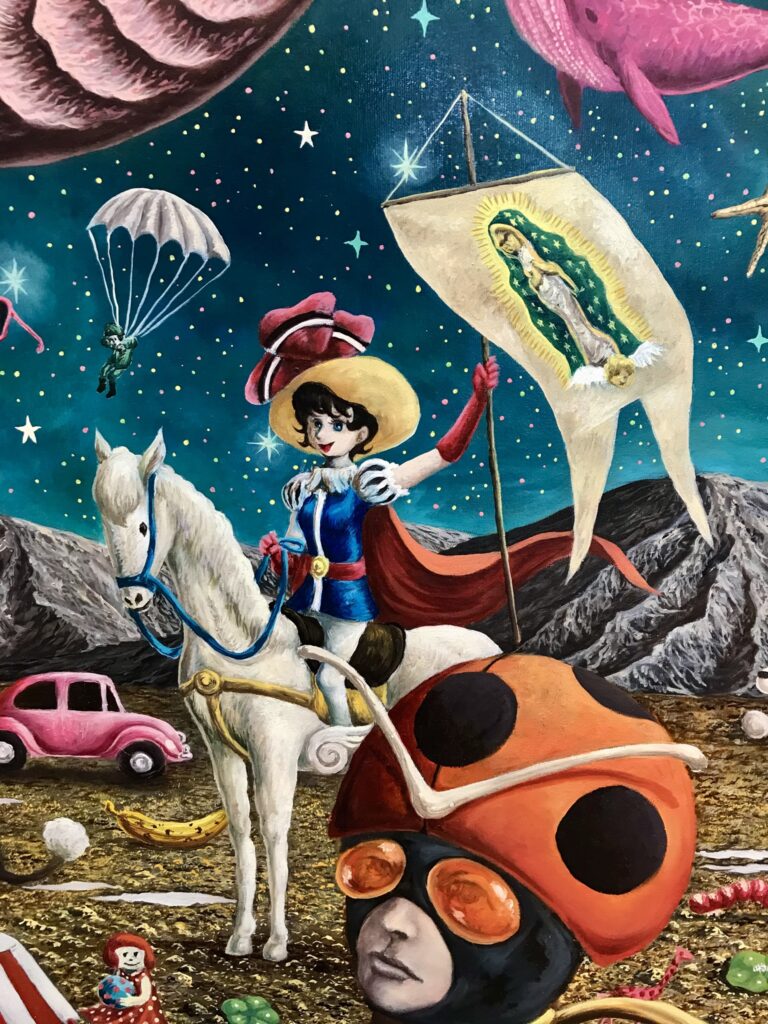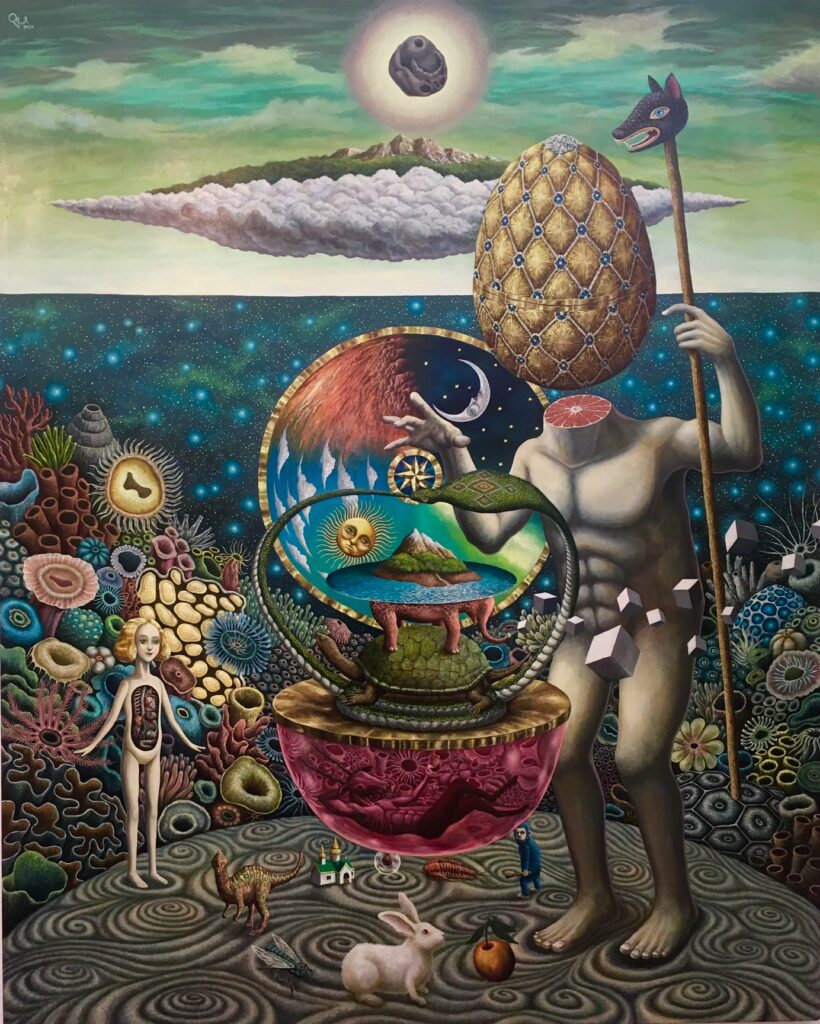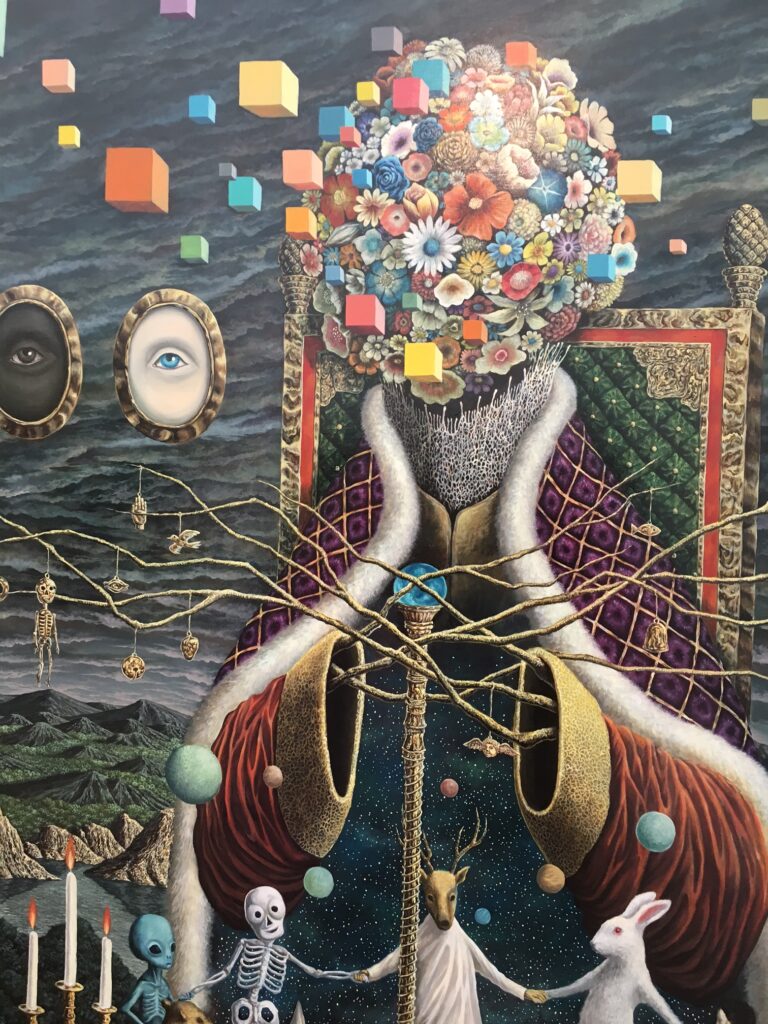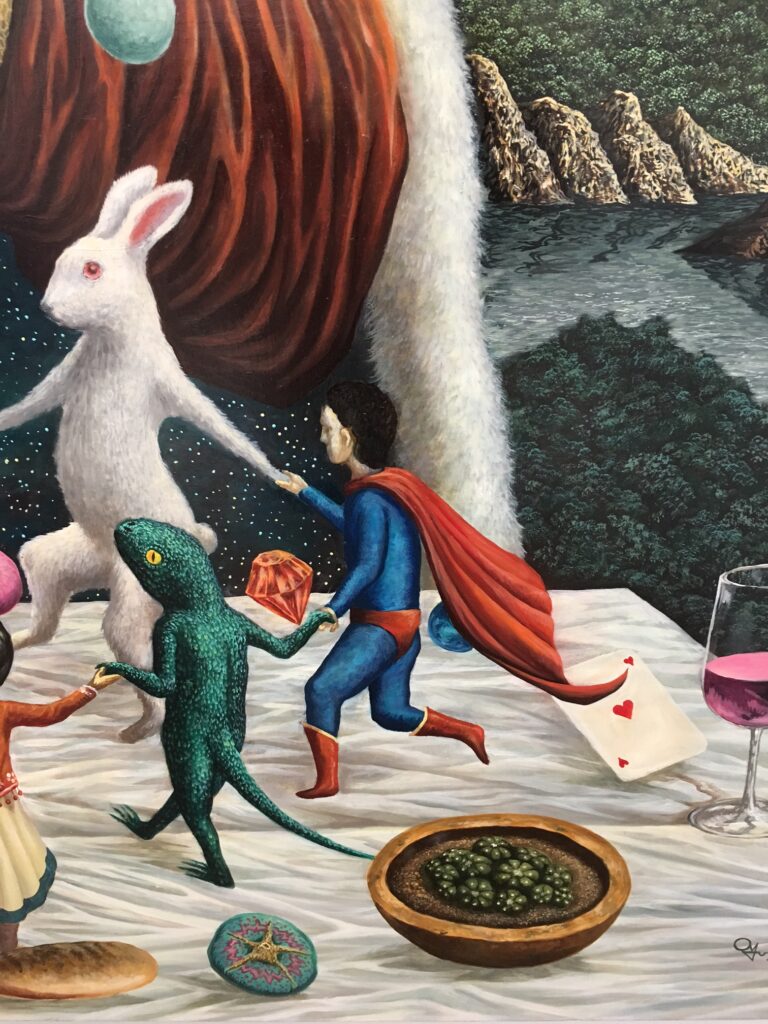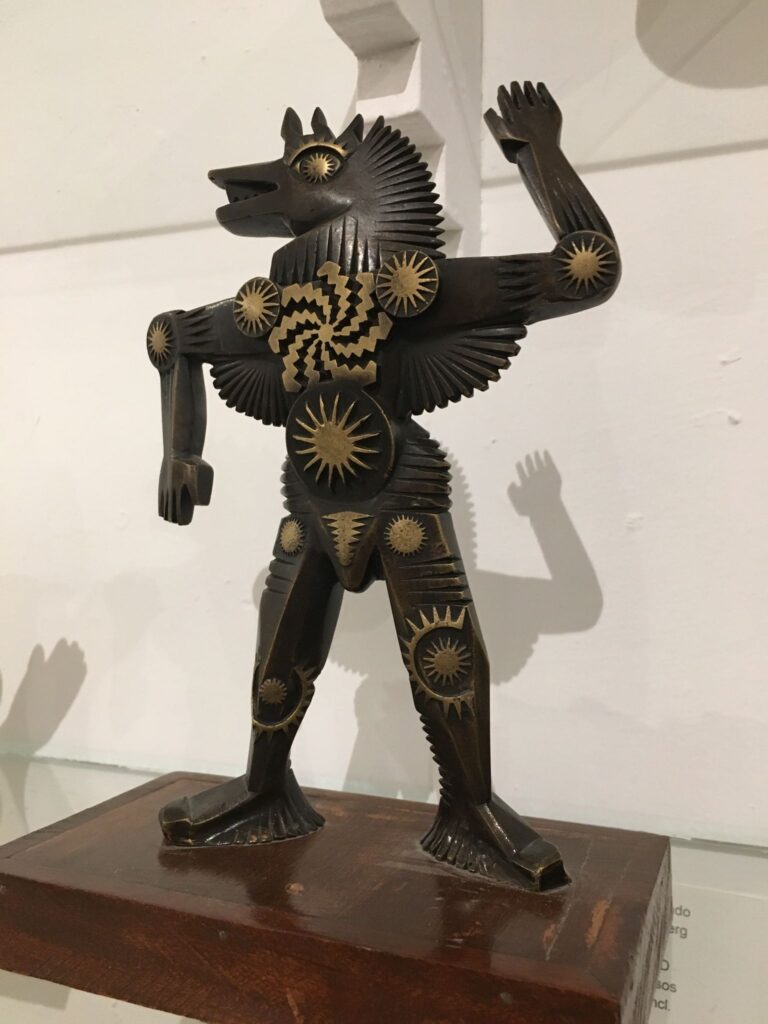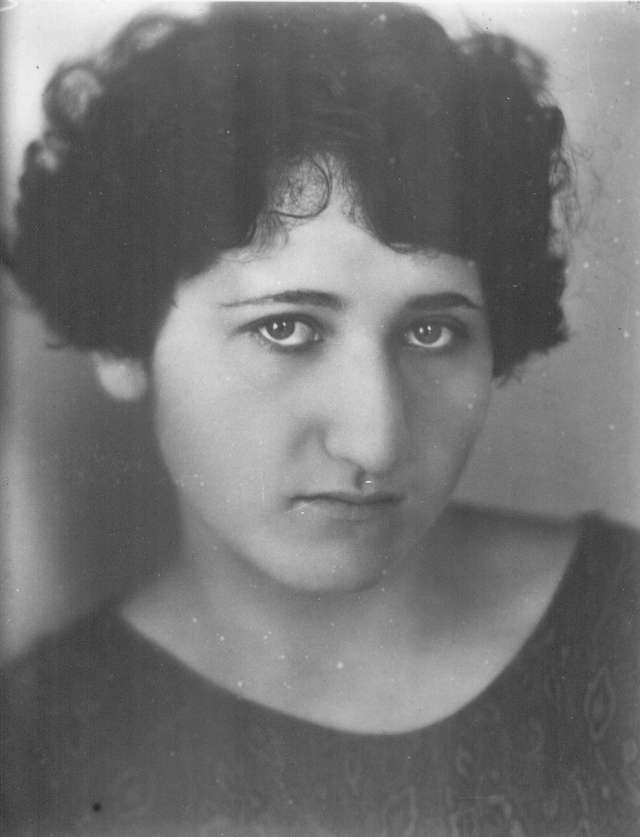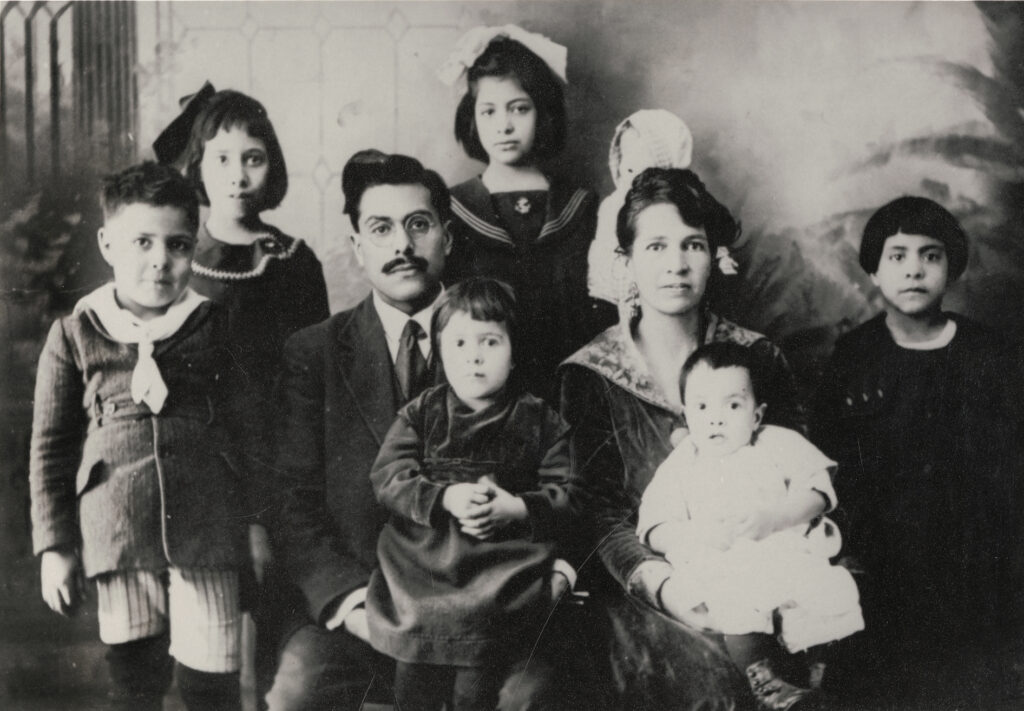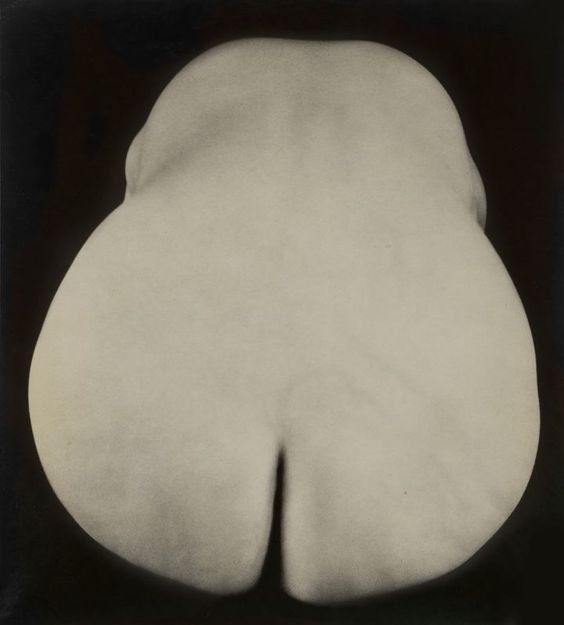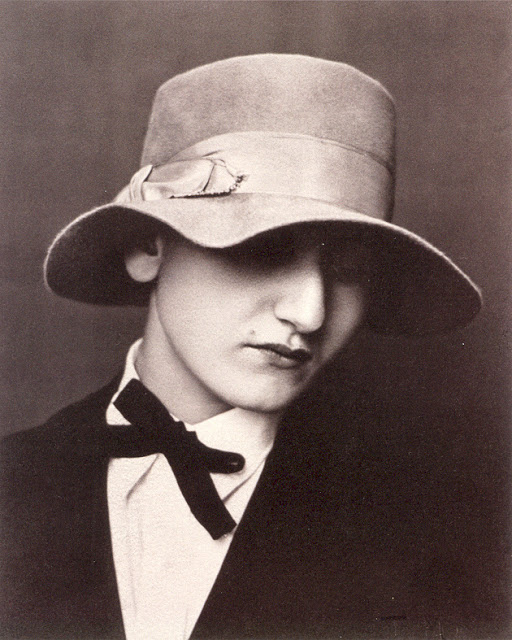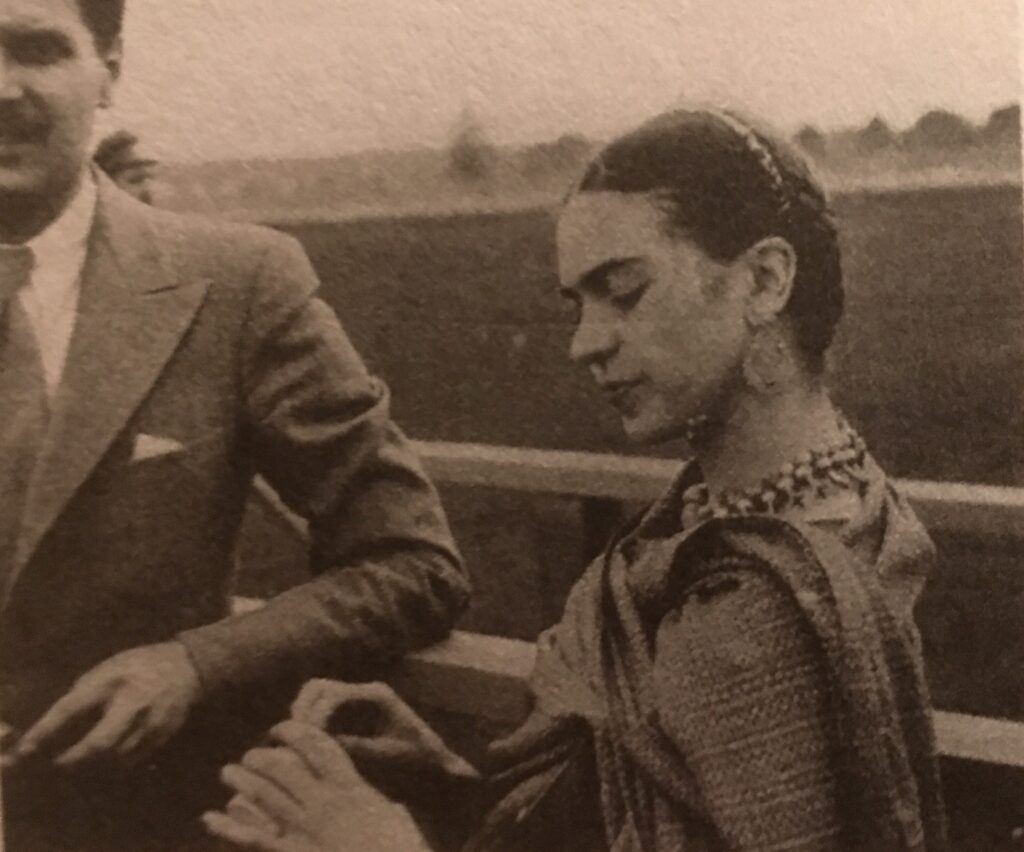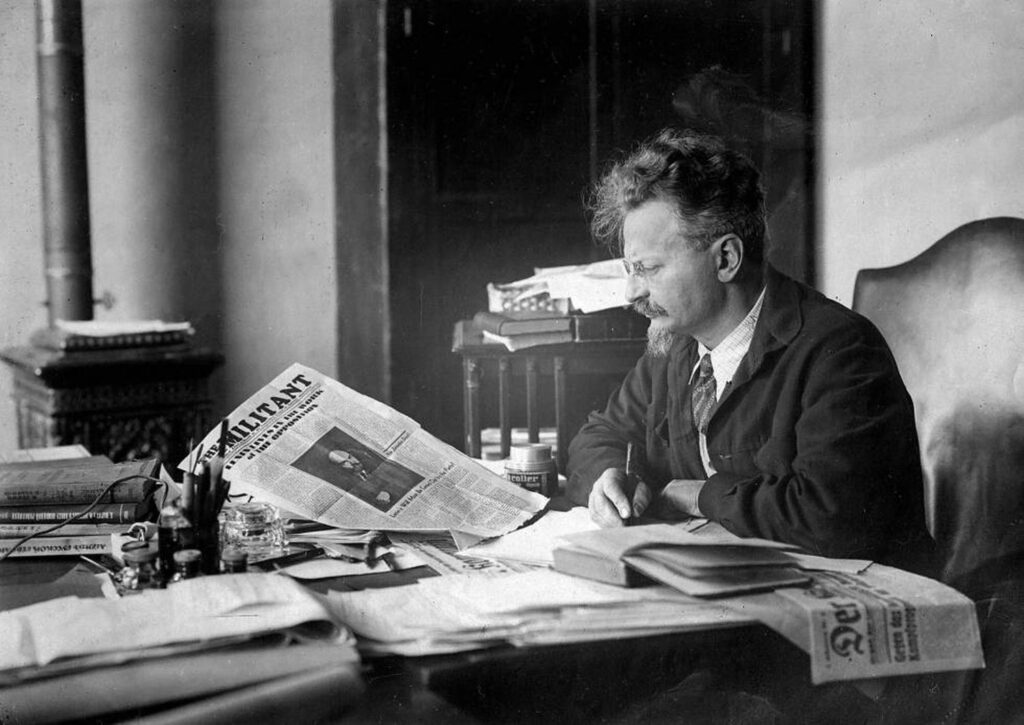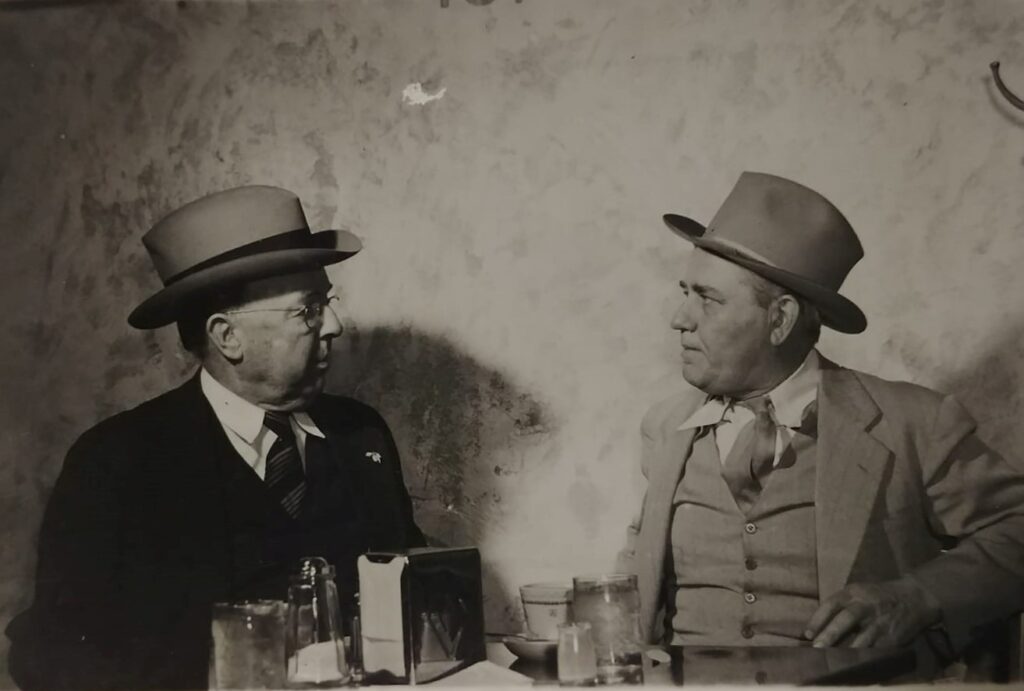R.D. LAING, DIANA GABALDON,
AND THE TAISCH OF MY GRANDMOTHER
Primitive Capital Accumulation Part 1

As children, my sister and I sometimes traveled to the tiny town of Parkhill, Ontario, to visit my paternal grandmother, born Katherine MacDonald. This Canadian town was so small and quiet that the local newspaper would announce our visit.
Grandma was a widow. Her grander days in Chicago and St. Charles were behind her. The geranium perfumes were left in bottles and the fur-collared coat kept in a closet. Aprons covered her dresses. She did still use lipstick, but now it mostly missed its mark. Yet her big-hearted, self-effacing and good-natured demeanor remained unchanged.
Not much happened in and around my grandmother’s shingle-sided home, which was large but simple and sparsely-appointed. Occasionally I could hear the distant sound of an automobile passing on the unpaved street. The slow movement of time was evident by the movement of light and shadow as the day progressed. Mechanical time made itself known by the abrupt eruption of loud chimes from an imposing grandfather clock.

Grandma was a big reader, as was I. On one visit, when I was about 15 years old, I brought along a new book to read I had picked up at Krochs & Brentano’s bookstore in the Chicago Loop. It was called The Politics of Experience by the psychiatrist and philosopher R.D. Laing. That book had a profound influence on me.

More than 50 years later, I prefaced my own book, The Life and Times of Alberto G. Garcia with a quote from Laing’s book:
Our capacity even to see, hear, touch, taste and smell is so shrouded in veils of mystification that an intensive discipline of un-learning is necessary for anyone before one can begin to experience the world afresh, with innocence, truth and love.
And immediate experience of, in contrast to belief or faith in, a spiritual realm of demons, spirits, Powers, Dominions, Principalities, Seraphim and Cherubim, the Light, is even more remote. As domains of experience become more alien to us, we need greater and greater open-mindedness even to conceive of their existence.
This quote from Dr. Laing seemed an appropriate introduction to a book about a man of such love and remarkable accomplishments as Dr. Alberto Garcia, a man who cultivated direct experience of a spiritual realm invisible to most.
The Scottish Legacy
When reading The Politics of Experience in Parkhill, I didn’t know that Laing was a Scotsman. Nor did I know less than 200 years ago, in Scotland fairies were said to freely gift the experience of Second Sight, the ability to see with the “third eye.” The erudite Dr. Laing was undoubtedly familiar with the writings of Dr. Samuel Johnson about his travels to the remote and strange islands of the Scottish Highlands around 1774. The Londoner Dr. Johnson was known in posthumous centuries as the most distinguished man of letters in English history.

During his travels to the islands, Dr. Johnson was confronted by the phenomenon of Second Sight. In his book, he struggled to understand this seeming “breach of the common order of things.”
It is the common talk of the Lowland Scots, that the notion of the Second Sight is wearing away with other superstitions; and that its reality is no longer supposed, but by the grossest people. How far its prevalence ever extended, or what ground it has lost, I know not. The Islanders of all degrees, whether of rank or understanding, universally admit it, except the Ministers, who universally deny it, and are suspected to deny it, in consequence of a system against conviction. One of them honestly told me, that he came to Skye with a resolution not to believe it.
By the term Second Sight, seems to be meant a mode of seeing, superadded to that which Nature generally bestows. In the Earse it is called Taisch; which signifies likewise a spectre, or a vision.
The Second Sight is an impression made either by the mind upon the eye, or by the eye upon the mind, by which things distant or future are perceived, and seen as if they were present. A man on a journey far from home falls from his horse, another, who is perhaps at work about the house, sees him bleeding on the ground, commonly with a landscape of the place where the accident befalls him. Another seer, driving home his cattle, or wandering in idleness, or musing in the sunshine, is suddenly surprised by the appearance of a bridal ceremony, or funeral procession, and counts the mourners or attendants, of whom, if he knows them, he relates the names, if he knows them not, he can describe the dresses. Things distant are seen at the instant when they happen. Of things future I know not that there is any rule for determining the time between the Sight and the event.
This receptive faculty, for power it cannot be called, is neither voluntary nor constant. The appearances have no dependence upon choice: they cannot be summoned, detained, or recalled. The impression is sudden, and the effect often painful.
That they should often see death is to be expected; because death is an event frequent and important. But they see likewise more pleasing incidents. A gentleman told me, that when he had once gone far from his own Island, one of his labouring servants predicted his return, and described the livery of his attendant, which he had never worn at home; and which had been, without any previous design, occasionally given him.
Our desire of information was keen, and our inquiry frequent. [W]e heard many tales of these airy shows, with more or less evidence and distinctness.
Strong reasons for incredulity will readily occur….. It is a breach of the common order of things, without any visible reason or perceptible benefit.
Yet Dr. Johnson’s own intelligence, knowledge and attainments made it hard for him to reject the existence of Second Sight simply because it appeared to be contrary to the “common order of things.” By
presuming to determine what is fit, and what is beneficial, they presuppose more knowledge of the universal system than man has attained…..
The holders of this talent in Scotland, however, bore no resemblance to those, like Issac Newton, who were well-known to have upended understandings of the world. To the most sophisticated and accomplished Johnson, it was hard to believe that such an ability would be found in a “a people” he perceived as
very little enlightened; and among them, for the most part, to the mean and the ignorant.
On the other hand, their very simplicity and guilelessness (the absence of capitalist profit motive in the excercise of their Second Sight) was perhaps reason to take their reports seriously.
By pretension to Second Sight, no profit was ever sought or gained. It is an involuntary affection, in which neither hope nor fear are known to have any part.
This faculty of seeing things out of sight is local, and commonly useless.
Those who profess to feel it, do not boast of it as a privilege, nor are considered by others as advantageously distinguished. They have no temptation to feign; and their hearers have no motive to encourage the imposture. [For the Highlanders,] there was neither shame from ignorance, nor pride in knowledge; neither curiosity to inquire, nor vanity to communicate.
To talk with any of these seers is not easy. There is one living in [the island of] Skye, with whom we would have gladly conversed; but he was very gross and ignorant, and knew no English. The proportion in these countries of the poor to the rich is such, that if we suppose the quality to be accidental, it can very rarely happen to a man of education; and yet on such men it has sometimes fallen. There is now a Second Sighted gentleman in the Highlands, who complains of the terrors to which he is exposed.
The foresight of the Seers is not always prescience; they are impressed with images, of which the event only shews them the meaning. They tell what they have seen to others, who are at that time not more knowing than themselves, but may become at last very adequate witnesses, by comparing the narrative with its verification.
To collect sufficient testimonies for the satisfaction of the publick, or of ourselves, would have required more time than we could bestow.…. I never could advance my curiosity to conviction; but came away at last only willing to believe.
Upon examination of a broad range of human history, Dr. Johnson concluded that Second Sight is not in truth a breach in the order of things.
[C]onsidered in itself, it involves … impulses, or visionary representations, has prevailed in all ages and all nations….. [The] Second Sight of the Hebrides implies only the local frequency of a power, which is nowhere totally unknown; and that where we are unable to decide by antecedent reason, we must be content to yield to the force of testimony.
Additional testimony from beyond the horizon of modernity and the edge of history can be found in old records. In Leakey’s Bookshop in Inverness, I happened upon William MacKay’s Notes on Highland Superstitions (Nov. 12, 1885) in Volume III of Transactions of the Inverness Scientific Society and Field Club. MacKay reviewed Scottish records dating from as early as the year 1655 to show how Christians vigorously stamped out practices like the offering of oblations of milk upon the hills, fire worship amidst fields of kale, and “adoration of the holy wells.” These pre-Christian practices were the products of the experiences of a people who from time immemorial had belonged to the land, engaged in simple routines that allowed for a good deal of silence and opportunity for subtler aspects of the world to be noticed and known.

On Leakey’s Bookshop shelves was also an old copy of Alexander MacKenzie’s The Prophecies of the Brahan Seer, first published in 1877 in the City of Inverness. This book collected very specific predictions preserved from the 17th Century of a Highlands prophet and peat-digger with a particularly large third-eye. Many predictions came true. Others did not. The seer’s Gaelic name was Coinneach Odhar, which in English means “dun-colored Kenneth.” He foretold his nation’s loss of Second Sight: “the people will degenerate as their country improves.”

Through subsequent centuries, some in Scotland have retained a Second Sight or continued to cultivate it. This was one of the purposes of Freemasonry (which originated in Scotland) and affiliated occult groups like the Rosicrucians. The Scottish poet Henry Adamson wrote of this in 1638:
For what we do presage is not in grosse,
For we are brethren of the Rosie Crosse;
We have the Mason Word and second sight,
Things for to come we can foretell aright.
The masonic Scottish Rite and a UK-originated Rosicrucian order were the main lineages to which Dr. Alberto Garcia was a student from approximately 1922 to 1962 while he lived in Austin Texas.
In the Life and Times of Alberto G. Garcia, I document how some of the more recent scientific knowledge and research relating to human consciousness has confirmed the fact of Second Sight and provided plausible scientific explanations for these phenomena. There are reasons why Second Sight may not be a breach of the common order of things.
Why did Second Sight Wear Away?
What was going on in Scotland in the years before and after 1774 that would cause the spontaneous and vivid experiences of Second Sight to be diminishing? Two interrelated factors, perhaps.
Second Sight was condemned by an encroaching Christian church and state, who defined such awareness and ability as demonic, a form of witchcraft. The law, where the English-speaking world of Scotland or England had jurisdiction, began in 1542 to forbid witchcraft and to torture and burn witches. The great jurist Edward Coke drafted the 1604 Witchcraft Act which imposed the death penalty on those who communed with fairies and other spirits and powers. By 1775, witches were no longer burned at the stake, but “magical” powers were condemned by the clergy and it was still a crime to admit to them.

A second factor in the decline of the faculty of Second Sight, was the mass uprooting of people from their lands and ways of life of long silences and ancient rhythms. The capitalist market imposed itself and came to define relationships among people that replaced the duthchas and other feudal relationships that bound everyone to the land, and had provided a commons and subsistence to all. About this, Karl Marx wrote: “for the first time, nature becomes purely an object for humankind, purely a matter of utility; ceases to be recognized as a power for itself.” A relationship with nature characterized by oblations of milk upon the hills, fire worship amidst fields of kale, and “adoration of the holy wells” was disrupted and the earth’s surface transformed into parceled commodities. Nature became an instrumentality of capital, a thing—parceled by metes and bounds and allocated to those handful with the means and willingness to most ruthlessly and profitably exploit it as owners.
A poem of the era singled out prominent land surveyor John Roy and estate manager Patrick Sellar:
Sellar and Roy were guided by the very devil,
when they commanded that the compass
and the chain be set to measure the land.
I saw a dream,
and I would not mind seeing it again,
if I were to see it while awake,
it would make me merry all day.
A big fire was ready
and Roy was right in the middle,
… and there was iron about Sellar’s bones.
Roy divided the land into parcels suitable for serving capital and Sellar carryied out evictions so violent that one earned him a charge of homicide. Mass evictions, and other elements of the Highland Clearances, sent dispossessed Highlanders to urban slums to adapt to the schedules and sensibilities of the capitalist industrial revolution
“Before 1760 there were few completely landless people in the Scottish countryside,” according to historian T.M. Devine. But it “by 1830 had become a different kind of society.” Social transformation in the Gaeldom of the Western Highlands “was more traumatic and cataclysmic than anywhere else in Scotland. The Highlands moved from tribalism to capitalism in less than two generations.” Whole communities were cleared and replaced with sheep.


Karl Marx wrote about this in his book Capital, and used it as a paradigmatic example of “primitive capital accumulation,” the process by which fundamental resources from which people create their livelihood are taken from them and appropriated and used to create the wealth of capital. Marx called primitive capital accumulation the “original sin” of the capitalist political economy, the pillaged source of all capital. Highlanders dispossessed of their land and other resources joined the massive labor reserves of industrial capitalism, their labor transformed into a commodity in the service of the owners of capital. Many migrated to the slums of cities. Glasgow harbored the largest and most impoverished slums of Europe.


Other dislocated islanders took overseas jobs within the British Empire or migrated to Canada or the United States to occupy lands dispossessed from Native Americans by the primitive capital accumulation carried out by the British Empire in the Western Hemisphere.
Marx identified the condition created from this dispossession as one of alienation.
Diana Gabaldon
The contemporary world’s most significant popularizer of Scotland is the novelist and screenwriter Diana Gabaldon. Her Outlander novels and television series are the product, among other things, of an immense amount of historical research. Before becoming a fiction writer, Gabaldon was a scientist with a bachelor’s degree in zoology, a master’s degree in marine biology and a Ph.D. in behavioral ecology. In February of 2021, I had the opportunity to ask this brilliant woman about Second Sight and the observations made by Dr. Samuel Johnson. The occasion was a Zoom event sponsored by the San Miguel de Allende International Writers Conference.
Diana Gabaldon, as I expected, was familiar with Dr. Johnson’s writing on the subject. I asked her, in light of her background as a scientist and her knowledge of Scotland, whether she thought the Scottish Highlanders were putting one over on Dr. Johnson or were suffering from some sort of delusion regarding Second Sight— or whether Dr. Johnson was reporting a real phenomenon. She responded that this is a real “thing” that is very much still alive in Scotland. She mentioned an experience of being hosted in a castle in Scotland by a very successful and wealthy man who in all sincerity warned her about the ghost there that he and others had seen.
Second Sight in contemporary Scotland was the subject of research by Shari Ann Cohn at the University of Edinburg in 1996. Her surveys showed that 16% of the people in the Highlands said they have experienced Second Sight, a claim made by as many as 33% in the northeast Grampian area of Scotland. But only 10% in the cleared islands of North and South Uist still claimed to have experienced the gift of Second Sight.

Second Sight of My MacDonald Grandmother
During my Parkhill visit, while I was sitting in a comfortable chair in my grandmother’s home in Ontario, reading R.D. Laing’s Politics of Experience, I knew my grandmother’s parents were MacDonalds and were Scottish. I loved the opportunity to hear bagpipes played at social gatherings. But at the time I had no idea that Laing himself was a Scotsman born in Glasgow.
Only recently did I learn that my grandmother’s mother Flora MacDonald also was born in Glasgow, born of parents from the very islands Dr. Johnson visited 100 years earlier. Flora’s father Donald MacDonald was born on the Outer Hebrides island of North Uist to a family of farmers. He perhaps was among the 1,300 people removed from their homes in North Uist during 1838 and 1843 to be replaced by sheep. He came to Glasgow to sell his labor as a joiner. His wife, from the Island of Skye, became in Glasgow a servant in homes of the better off. They left Glasgow with their daughter, my great grandmother Flora, for Canada.
Ontario, Canada, however, did not offer complete relief from privation and tragedy. My grandmother’s father (like her mother, a MacDonald) one Sunday in 1907 put on his suit, went out the barn and shot himself dead. He had been suffering from incurable cancer. Faced with poverty, my grandmother Katherine MacDonald was sent away as a child to relatives, who beat her and treated her with exploitive cruelty.

Katherine eventually returned to her mother’s farm to help care for her siblings. Due to her own perseverance she went to school, became a nurse, and traveled to the United States to care for patients during the great flu pandemic that followed World War I. In Illinois she met my grandfather Louis Rockwell, a lawyer from the small picturesque town of St. Charles. They married and she gave birth to my father.

A well-documented family story gives testimony that while the Scottish Second Sight diminished, vestiges have survived the centuries of persecutions and Clearances.
During World War II, my father Frank joined the Navy and served in a unit called Argus 11, which was embedded within the Marines. As a radioman he provided morse code communication from Guadalcanal and other Solomon Island battlefields in the South Pacific. Unbeknown to his family back home in Illinois, he was part of a force that invaded the island of Rendova at the end of June, 1943. Back home, upon going to sleep on or around July 1, my grandmother had a horrible dream. She could see bombs blowing up around my father and see a piece of shrapnel pierce his back. Frank was hit! She woke up in fright and anguish from this unusually vivid dream, and told her husband and daughter Anne about it. She also wrote it down.
In due time my grandmother received a telegram confirming the accuracy of her dream, and telling her that her son was OK. More details came later. Around the time of that dream, at 1:30 pm July 2, Solomon Island Time, my father’s unit was among the U.S. forces hit by 50 to 60 bombs that were dropped with unusual accuracy by Japanese Ki-21 Mitsubishi bombers. Hearing the bombs falling, my father leaped out of his cot. As he ran towards a trench filled with rainwater, his cot was demolished by a bomb. A large piece of shrapnel blew into this back. All this reverberated in the heart of Frank’s mother, sleeping 7750 miles away, on the other side of the earth.



Epilogue
Other unnumbered accounts of 20th Century Second Sight exist of mothers during World War II who have seen the precise circumstances of death of their sons as they occurred thousands of miles away. At least one of these remembrances can be found in other blogs on Scottish Second Sight.
Within days of circulating my Scottish Second Site blog to a neighbor of mine named John, he approached me to tell me his own family story. John grew up in Somerset, England at a time when England was besieged by bombing raids and rocket attacks from Hitler’s Germany. John’s much-older brother was in the Royal Air Force. When John was the age of four, he remembers his mother reporting an unusually disturbing dream. She had seen his brother being shot down in his plane and fall into the Mediterranean where he died. Word soon arrived that this is tragedy had indeed occurred exactly as dreamed by John’s mother.
John describes his mother as being very much of the land. She and her ancestors lived on farms maintaining the life and ways of the primeval English countryside.
Sources
Brad Rockwell, The Life and Times of Alberto G. Garcia: Physician, Mexican Revolutionary, Texas Journalist, Yogi (2020); R.D. Laing, The Politics of Experience (1967); Samuel Johnson, A Journey to the Hebrides (1825 ed.); Alexander MacKenzie, The Prophecies of the Brahan Seer (1977 ed.); William MacKay, Notes on Highland Superstitions (Nov. 12, 1885) in Transactions of the Inverness Scientific Society and Field Club (Vol. III); Henry Adamson, The Muses’ Threnodie; Karl Marx, Capital (abridged ed. 2008, transl. David McLellan); Karl Marx, Grundrisse (London: Penguin, 1977); T.M. Devine, The Scottish Clearances: A History of the Dispossessed 1600-1900 (2018); Argus Unit 11, United States Navy Argus Historical Group=argus1-12/argus-unit-2/; Alfred Weinzierl, Ki-21 Sallys Attack Munda and Rendova, Pacific Wrecks, http://www.pacificwrecks.com/japanese/munda.html; Eric Hammel, Munda Trail (1989); S. A. Cohn, A Survey on Scottish Second Sight, The Journal of the Society for Psychical Research (1994, no. 835). Additional contemporary accounts of Second Sight are found in a blog called Second Sight among the Scots Irish in the McCain’s corner website and the comments to that blog (July 17, 2015).
Thanks to my sister Sarah for contributing her memories and checking mine, as well as providing some background research on family experiences with Second Sight.



















